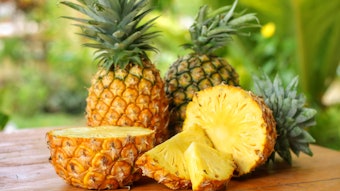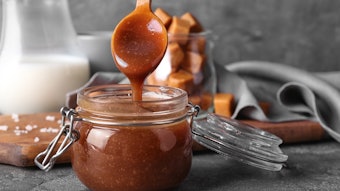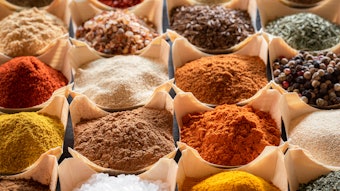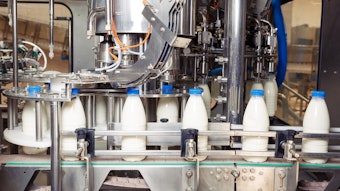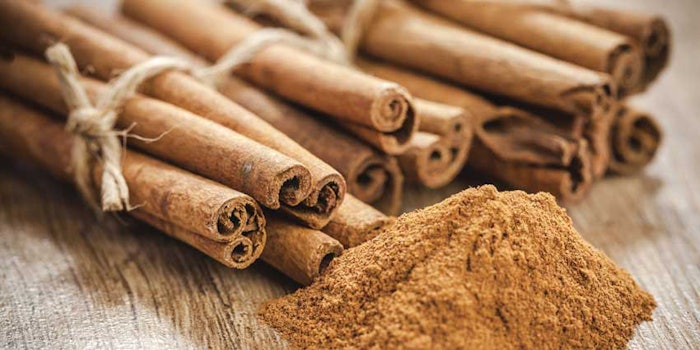
2-Butanone, natural, W217012
FEMA# 2170, CAS# 78-93-3, natural
Natural occurrence: Apple, butter, bread, plum, tea, yogurt and tomato.
Odor: @ 100%. Ethereal, sweet and solvent-like with a cooling lift.
Taste: @ 5 ppm. Solvent-like, sweet and impactful.
Taste: @ 10 ppm. Acetone-like, sweet and slightly fruity.
Possible applications: Used at low levels, this compound is useful for adding impact to fruit flavors like banana, grape and apple, as well as alcoholic flavors like brandy, wine and vodka.
Ethyl levulinate, natural, W244220
FEMA# 2442, CAS# 539-88-8, natural
Natural occurrence: Bread, brandy, rum, cocoa, garlic, onion, vanilla and wine.
Odor: @ 100%. Sweet, fruity, green, melon-like, slightly vegetable-like and earthy.
Taste: @ 20 ppm. Green, fresh, fruity and unripe.
Taste: @ 40 ppm. Fruity, green, waxy, melon-like and vegetable-like.
Possible applications: Although it will probably never play a leading role in flavors, this material will nonetheless add freshness to fruit flavors, like apple, berry, melon, kiwi, pear and guava, as well as vegetable flavors like cucumber, jicama and green pepper.
Methyl salicylate, natural, W274502
FEMA# 2745, CAS# 119-36-8 & 648434-07-5
Natural occurrence: Bilberry, champaca, black currant, concord grape, peach, plum, rue, tomato, ylang ylang and wintergreen.
Odor: @ 100%. Sweet, cooling, minty, spicy and wintergreen-like.
Taste: @ 2 ppm. Sweet, slightly anisic, minty and cooling.
Taste: @ 5 ppm. Sweet, cooling, minty, root beer-like and wintergreen-like.
Possible applications: This staple of root beer and mint flavors will also add sweetness and character to anise, cola and bubblegum flavors. A touch in butter flavors for margarine can help mask off notes in the oils used in those types of bases.
Ethyl 3-hexenoate, W334200
FEMA# 3342, CAS# 2396-83-0
Natural occurrence: Pineapple, brandy, melon, quince and wine.
Odor: @ 100%.Sweet, slightly harsh, fruity, green and slightly acidic.
Taste: @ 4 ppm. Fresh, fruity, green and pineapple-like with apple-like notes.
Taste: @ 8 ppm. Fresh, green, slightly honey-like and fruity with notes of apple, pear and pineapple.
Possible applications: This ester will reinforce character notes in pineapple, pear and apple flavors like Golden Delicious and Honeycrisp. Other flavors where it will add sweet, fresh, fruity depth are plum, kiwi, dragon fruit, passion fruit, strawberry and perhaps even a touch in tomato.
1,2-Dimethoxybenzene, W37990
FEMA# 3799, CAS# 91-16-7
Natural occurrence: Pandan leaves, coffee and cooked rice.
Odor: @ 1%. Slightly clove-like, woody, phenolic, earthy and tarry.
Taste: @ 2 ppm. Slightly clove-like, sweet, woody, slightly creamy and numbing.
Taste: @ 4 ppm. Sweet, slightly clove-like, warm, creamy and vanilla-like.
Possible applications: The tarry notes in the aroma of this chemical belie the creamy, spicy vanilla notes in the taste. This material will not only enhance vanilla, but also anise, licorice, wintergreen, root beer, spice and coffee flavors.
Guaiacyl phenylacetate, W253502
FEMA# 2535, CAS# 4112-89-4
Not yet found in nature.
Odor: @ 1%. Sweet, slightly wintergreen-like, warm and slightly brown.
Taste: @ 5 ppm. Slightly sweet, tingling, woody, slightly wintergreen-like and anisic.
Taste: @ 10 ppm. Anisic, woody, tarry, brown, phenolic and tingling.
Possible applications: The brown, anisic notes of this product will fit nicely into licorice flavors, as well as anise and fennel. It might also be considered for darker notes in honey flavor and Indonesian-type vanilla flavors.
2-Methylpyrazine, W330906
FEMA# 3309, CAS# 109-08-0
Natural occurrence: Almond, asparagus, beef, bread, chicken, coffee, guava, hazelnut, peanut, popcorn, rice, papaya, shrimp, tea and tomato.
Odor: @ 1%. Musty, raw nut-like, brown and peanut.
Taste: @ 10 ppm. Brown, musty, bready, brown and nutty.
Taste: @ 15 ppm. Slightly burnt, brown, bready, musty and nutty.
Possible applications: Brown flavors will benefit most from the use of this pyrazine. It will reinforce character notes in nut flavors, especially peanut and roasted almond. Bread crust, toasted oatmeal, coffee, rice, baked potato, cocoa, roasted meat and browned butter are also good applications for this material.
m-Cresol, W353000
FEMA# 3530, CAS# 108-39-4
Natural occurrence: Coal tar, jasmine, myrrh and osmanthus.
Odor: @ 1%. Tarry, spicy, smoky, leatherlike and slightly vanillalike.
Taste: @ 1 ppm. Tarry, spicy and phenolic.
Taste: @ 2 ppm. Phenolic, tarry, clove-like and ashy.
Possible applications: At very low levels m-cresol will enhance smoky notes in char and grill-type flavors, as well as lapsang suchong tea and smoke-cured meats like bacon, ham, sausage and lox. A touch in vanilla flavors can lend an ‘Indonesian’ quality.
Eugenyl acetate, W246905
FEMA# 2469, CAS# 93-28-7
Natural occurrence: Laurel, cassia, cinnamon bark and leaf, clove, tagete and valerian root.
Odor: @ 1%. Aromatic, sweet, spicy, slightly acidic and clove-like.
Taste: @ 5 ppm. Sweet, spicy, clove-like and tingly.
Taste: @ 10 ppm. Sweet, clove-like, slightly cooling and tingly.
Possible applications: With its sweet, spicy kick this ester will enliven condiment flavors like sweet pickle relish, gherkins, ketchup, mustard and those for salad dressing. Other flavor types where it will perform well are mint, clove, cinnamon, wintergreen and spice blends.
γ-Dodecalactone, W240001
FEMA# 2400, CAS# 2305-05-7
Natural occurrence: Butter, coconut, osmanthus, plum, plumcot and strawberry.
Odor: @ 1%. Sweet, fruity, oily, slightly soapy, nectar-like and peach-like.
Taste: @ 2 ppm. Oily, creamy, peach-like and sweet with good body.
Taste: @ 5 ppm. Waxy, creamy, fruity, peach-like, dairy-like and rich with good body.
Possible applications: With its creamy, fruity profile this lactone will fit nicely into peach, apricot, papaya, mango, coconut and strawberry flavors. It will also be appreciated in dairy flavors like cream, butter, ice cream, fresh cheese and yogurt flavors.

